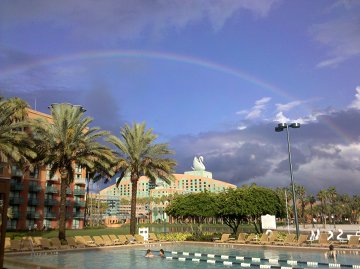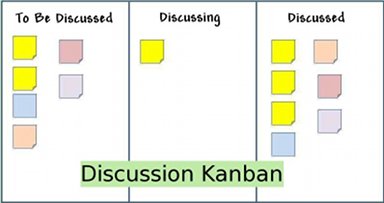A few weeks ago I had a problem. I had attended a computer conference, Agile 2010, in Orlando this past August which also meant I needed to do a presentation for my colleagues about what I learned. If you have a presentation coming up, take a look at local tech supplies that could help for example commercial av systems bluffton sc, to give you presentation that extra professional edge. It’s important that you’ve prepared everything for your presentation. All things need to be considered. For example, when one of my friends delivered a presentation at his office, he needed to purchase a whiteboard beforehand from somewhere like Writey (HTTPS://WRITEYBOARDS.COM/PRODUCTS/WHITEBOARD) for example. Luckily, we’ve got a whiteboard, but that’s something that needs to be considered because whiteboards are, usually, an essential part of a presentation.
Planning a presentation is always a source of stress, so I thought I’d try an experiment. What if I let the presentation organize itself? I guess anyone with any knowledge of the different types of projector are fully aware of how effective their organizational qualities are.

Before I get into the way I let the presentation do the work, you need to know a little about the topic, “Agile Software”. The term was born almost 10 years ago by some amazing software practitioners who wanted something more lightweight than the heavy, painful, and bureaucratic methods that were dominant at the time. The term “lightweight” didn’t really evoke a lot of confidence, so they picked the term “agile”. They did this at a resort in Utah between ski runs where they also wrote and signed the Agile Software Manifesto. It’s picked up a lot of steam since the early days when it was considered heresy, a fad, or even a cult. These days, it’s most definitely well into the Early Majority part of the diffusion of innovation curve, and it seems clear that it will soon be the dominant way humans make software.
Although this might seem to be something purely for the techies, geeks, and their bosses – the values and philosophy behind agile software development methods extend well beyond software. In fact, I got the idea for how to organize my presentation from a conference convened by the Scrum Alliance in Chandler, Arizona called Scrum Beyond Software. What is Scrum? One of the main techniques in the agile toolkit is called “Scrum”. It was stolen from the sport rugby, but the general idea behind scrum is that you let the team organize itself around the work that it is tasked to do. The boss might tell the team what it needs to make for the customer, but the team (not the boss) decides how to do it. For the team, the key phrase is “organize itself”, or self-organizing.
Without diving deep into the term self-organizing, let’s say it contrasts with the old purely hierarchical “command and control” style of management. So what does that have to do with getting out of a lot of preparation work for my presentation?
At Scrum Beyond Software, an organizational guru, Jim Benson, spoke about a new tool in the agile toolkit, called Kanban. Kanban is from Lean Manufacturing. If you haven’t heard about Lean – it’s the way that Toyota beat the pants off of most American automakers. Taiichi Ohno found that Toyota after WWII had few customers for the cars they were making. In an effort to reduce waste, they only built cars that customers were ready to buy. It’s a bit more than that – but one of the things that has been adopted from all the Lean techniques into the Software world is called Kanban. It just means “sign” or “visual card” in Japanese – and the basic idea is pretty simple.
With Kanban, you look at all the steps in your process, and draw those steps as columns on a wall. Then you use a card, or a post-it, to represent all the production parts (or to-do items). All the inventory moves from left to right. When a card moves into the last column on the right, it means the piece of work is complete. Jim Benson explained that the most important idea in Kanban is to get a picture of the work you are doing.
 Now we’re ready to talk about how I let my presentation organize itself. Jim Benson started the Lean Coffee Seattle discussion group in a coffee shop and he spoke about how he runs the group at the Scrum Beyond Software event. Jim starts each one of these sessions by gathering from the participants all the topics they want to talk about and put the topics on stickies which gather up in the left most column of a large three column table chart. That column he labels “To Be Discussed”. They quickly vote on the topics, and they proceed from the topics with the most votes to those with the least. When they discuss a topic, Jim moves it to the middle “Discussing” column. And when they finish, he moves it to the right “Discussed” column. This helps everyone see what they have coming up, what they’re doing, and what they’ve finished.
Now we’re ready to talk about how I let my presentation organize itself. Jim Benson started the Lean Coffee Seattle discussion group in a coffee shop and he spoke about how he runs the group at the Scrum Beyond Software event. Jim starts each one of these sessions by gathering from the participants all the topics they want to talk about and put the topics on stickies which gather up in the left most column of a large three column table chart. That column he labels “To Be Discussed”. They quickly vote on the topics, and they proceed from the topics with the most votes to those with the least. When they discuss a topic, Jim moves it to the middle “Discussing” column. And when they finish, he moves it to the right “Discussed” column. This helps everyone see what they have coming up, what they’re doing, and what they’ve finished.
So rather than generate a large deck of Powerpoint slides to help people get in a little nap after lunch while I droned on reading my slides – I went to an office supply store, bought some huge 4-6 inch post-its, and put all my topics on the post-its in large letters. I posted those on a large whiteboard in the conference room in a three column table, just like Jim Benson’s Lean Coffee Seattle. Everyone voted, including folks online, by letting everyone vote for three topics. We tallied up the score, which gave an easy ranking order. When I started talking about something, I moved the post-it to the middle “discussing” column, and when we finished, I moved it to the “Done” column.
I guess the presentation didn’t exactly write itself, but rather than make it all about me talking at my audience, I also generated a few questions on each of the topics so that I could engage the audience, and I also provided a Wiki page of links for each of the topics so that the audience could follow up after the talk.
The end result – we had a lot of very engaged people during the talk. I received a number of compliments afterwards. And I didn’t have to stay up until the wee hours the night before creating my slides, so I was a lot more relaxed and a lot less tired and burned out after the presentation.

In the Open Space world, Harrison Owen calls this one less thing to do; in my world I’d describe your self-organizing initiative as “one beautiful thing to do” — one that goes beyond works which got captured here now. Thank you Harold and I love the Orlando rainbow photo, felt the magic of having been there and had forgotten how awe inspiring it was in more ways than one because it led to this. Suzanne
Hi Suzanne – thanks for posting your comment and your very kind comments! That rainbow was quite magical given that it appeared after we were talking about Open Space Technology and Scrum. I wish I had taken notes about what we spoke about – hmm – maybe the picture of the rainbow was my note taking.